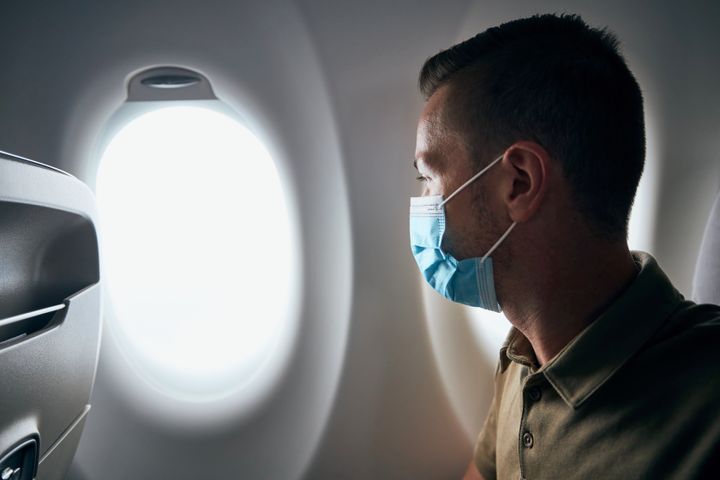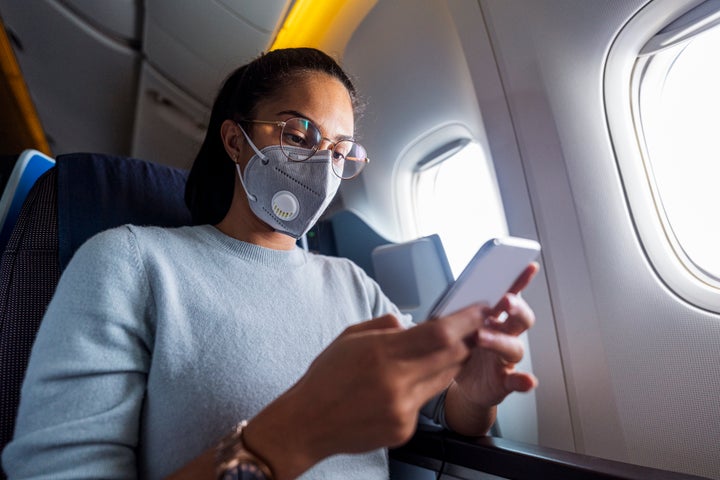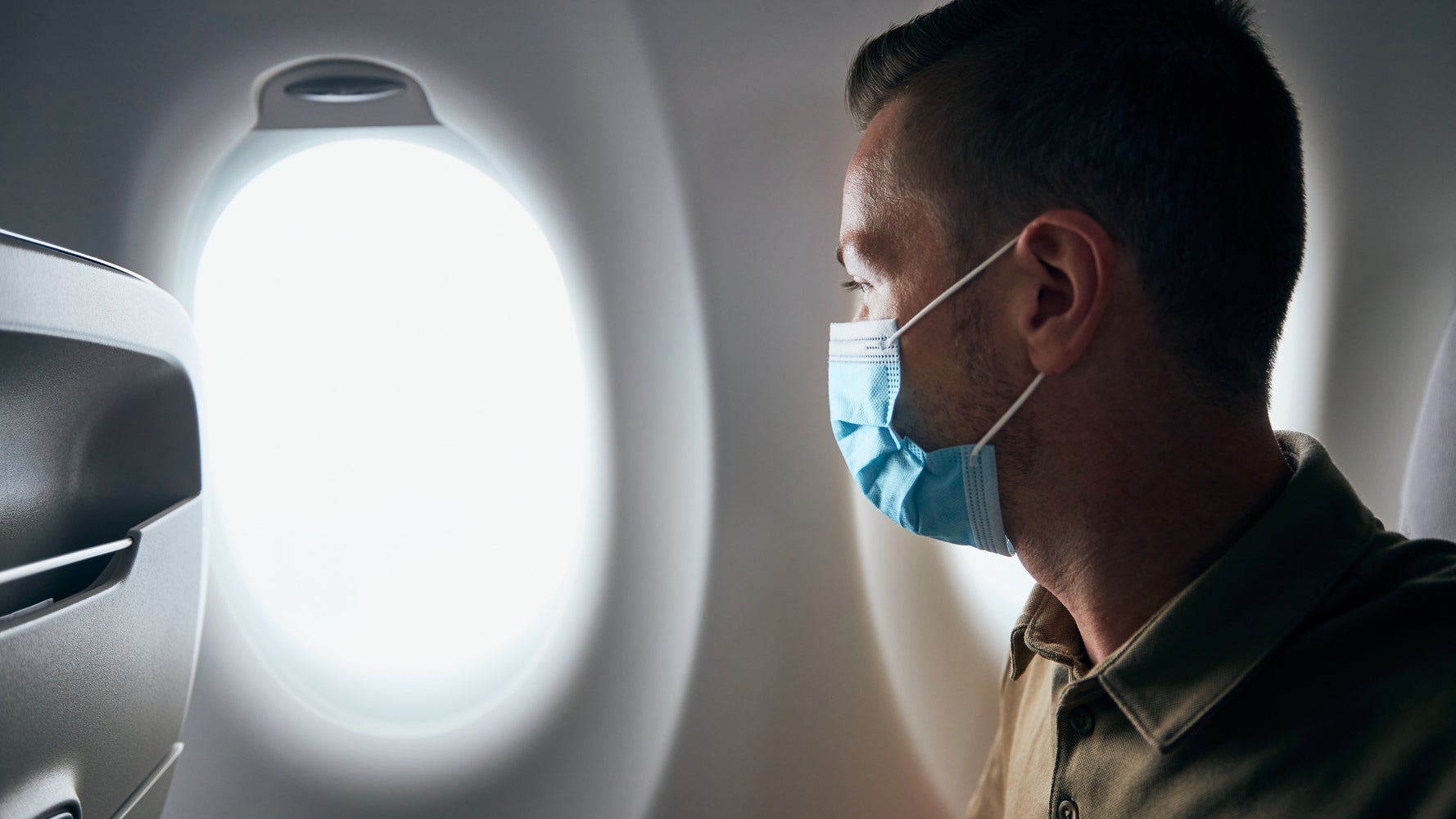
Air travel might feel like no big deal to many people. But for others, the experience is particularly anxiety-inducing. In fact, these difficult feelings can at times be strong enough to lead to a panic attack.
“Fear of flying can be considered a cross-section of different phobias,” said Meg Gitlin, a psychotherapist in New York and the voice behind the therapy insight Instagram City Therapist. “For example, one’s fear of flying could be rooted in other common phobias, like fear of heights and fear of being trapped and being unable to escape.”
Meanwhile, the COVID-19 pandemic has intensified fears around germs, illness and close contact with strangers. Rampant flight cancellations and delays of late only add to the anxiety, with travelers wondering whether they’ll make it to their destination. And then there are the rising incidents of violence on planes.
With all this stress, it’s no wonder some people feel heightened emotions about air travel. And even if the flight environment doesn’t affect you, it’s still possible to have a panic attack while you happen to be on a plane.
So, what should you do if you find yourself experiencing a panic attack during a flight? Below, experts share their advice for coping in the moment and preparing for your next trip.
Focus on a breathing exercise
“Individuals who experience panic typically don’t breathe from the diaphragm, which can lead to hyperventilation,” said Kevin Chapman, a Kentucky-based clinical psychologist who specializes in anxiety-related disorders. “Breathing is a ‘portable tool’ to decrease hyperventilation.”
He recommended slowly inhaling through your nose for four or five seconds and then exhaling out of your mouth for six seconds.
“Imagine you are breathing from your belly ― hence the term ‘belly breathing’ ― instead of taking more shallow breaths from your lungs,” Gitlin advised. “The focus should be on expanding your stomach and rib cage, and going as slowly as possible, with the exhale being longer than the inhale.”
You can place your hand on your stomach to feel the breath going in and out. Try to count it out and repeat the cycle multiple times.
Apps like Headspace and Calm offer guided breathing exercises ― some are even available through the in-flight entertainment offerings on certain airlines.
Use cold water
“My favorite coping mechanism for an oncoming panic attack is to shock your system with cold water,” Gitlin said. “This activates what is called the ‘mammalian diving reflex.’ It works by turning on our parasympathetic nervous system, which conserves our body’s energy and slows our heart rate, allowing us to physically relax.”
Gitlin suggested asking a flight attendant for a glass of ice water and submerging a few fingers in it or rubbing a cold compress on the back of your neck.
“A lot of times the stifling air or tight seats or warmth in a plane can induce some of the physiological discomfort associated with a panic attack, which is feeling hot flushed, sweaty palms, heart racing,” said Sue Varma, a psychiatrist in New York.
Varma also advised applying water to your neck or drinking ice water to help you cool down quickly. Walking to the bathroom and splashing cold water on your face can also help.
Take stock of what’s around you
“Adopting a present-focused, nonjudgmental stance on the flight is a very useful skill when experiencing panic,” Chapman said.
He advised practicing mindful awareness, trying to focus your attention on yourself in the present moment when you start to feel uncomfortable ― “focusing on how my body feels in the seat, my breathing, the sounds of the aircraft, the chatter, etc.”
If going inward and focusing on your physiological existence doesn’t work, try looking outward instead.
“An additional strategy is to shift attention from current distress and to an external cue,” Chapman said. “This could include the seatback in front of you, the people around you, the flight attendants, etc.”

Create a list of calming statements (and use them)
Coming up with coping statements and storing them on your phone for easy access is another helpful tool for dealing with anxiety and panic attacks.
“These are super specific to each individual and can sound like, ‘I can do things I am afraid of and have survived every flight I’ve been on,’” Gitlin said. “They also may remind a person why they are taking this specific risk ― ‘I am getting on a flight to visit my mother who is sick. Our relationship is very important to me and I am willing to be uncomfortable in order to see her.’”
Chapman advised grounding yourself with evidence-based thoughts to separate the facts you know from the fictions your mind might create.
“This involves identifying the thoughts that are leading to panic, but also recognizing the truth about panic,” Chapman said. “Panic is uncomfortable but not dangerous. There is a significant difference between discomfort and danger.”
Some evidence-based thoughts that could decrease the heightened sensations and feelings associated with panic attacks include: “temporary confinement is not being trapped;” “this too shall pass;” “ride the wave;” and “these symptoms are uncomfortable but not dangerous.” Chapman suggested declaring these thoughts in a matter-of-fact tone in your head or quietly out loud.
Instead of full statements, you might also find relief through shorter words or phrases.
“You want to be able to say to yourself a calm word that you have chosen in advance,” Varma said. “You can say the word ‘home’ or the word ‘breathe’ or ‘I am safe.’”
Ask a doctor about medication
Panic attacks often come out of nowhere. But if you’re prone to these sudden episodes, it might be helpful to talk to a professional about medication options.
“Many people travel with a prescribed dose of short-acting benzodiazepine,” Varma said. “It doesn’t hurt to even book an appointment with a psychiatrist who can help you with this if you travel frequently. You want to discuss all your specific symptoms with your provider and this medication has its own risks and side effects, so may not be for everybody.”
You can take anxiety medication before your flight or just keep it on hand in case you start to feel a panic attack coming on. Although some medication might not take effect until after the moment has passed, Varma noted that it can still help with the after-effects or uneasy feelings that can follow an episode.
“I find that many people don’t even end up taking the medication at the moment, but feel a degree of comfort knowing it is there if they need it,” Gitlin said.
Rely on a relaxing outlet or distraction
Before you travel, try thinking about what might bring you comfort if you start to feel a sense of panic during the flight.
“Is there anything they would find calming?” Gitlin asked. “Perhaps this is uploading a few episodes of their favorite mindless TV show to their iPad for easy access.”
Varma suggested packing noise-canceling headphones and downloading music or movies that are upbeat and funny, or carrying a little bit of soothing essential oil if that helps you relax.
“Generally speaking, I like to tell people prone to panic attacks to get an aisle seat, pay extra for legroom, get to the airport earlier, book a flight during non-peak hours, do whatever you can to make your trip less stressful to begin with,” Varma added.
Chapman recommended some in-flight reading to help you understand and feel more in control of your emotions.
“Something therapeutic to assist with panic could be reading scientific articles about the nature and causes of anxiety and panic,” he said.
Of course, making every flight worry-free is probably impossible. But you can learn from each experience and feel better prepared for the next one.
